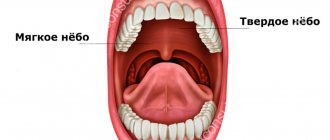Pathogenesis of renal edema
The mechanism of formation of renal edema is associated with the following phenomena in nephrological patients:
- massive loss of protein in urine;
- decrease in plasma albumin concentration;
- hyperlimidemia;
- increased movement of fluid from the intravascular space.
Patients have a high ratio of sodium and potassium in the urine, which indicates an imbalance of water and electrolyte balance.
The mechanism for the appearance of such a symptom is still not fully understood, but the characteristic picture indicates to the doctor pyelonephritis, glomerulonephritis. Filtration and excretion of urine are also impaired with kidney cysts, benign or malignant neoplasms.
Surgical methods - in case of emergency
Surgery will be necessary if there is an open fracture, ligament damage or severe injury. Panaritium can also serve as an indication for surgical intervention. To cope with this disease, it is imperative to eliminate the inflamed area with pus, thoroughly clean the cavity with the infection and apply stitches. After surgery, it is necessary to do dressings, take antibiotics and anti-inflammatory drugs.
Surgery may be required if the cartilage and surfaces of the joints are severely damaged in the later stages of arthritis or arthrosis, and the fingers become swollen, stiff, and painful. In especially severe cases, endoprosthetics is prescribed, when a worn-out joint is replaced with an artificial one.
Surgery may be performed in the presence of a malignant tumor. The oncologist prepares an individual therapy program for each patient.
Characteristics of edema of renal origin
Diseases of the urinary system are accompanied by edema with the following features:
- rapid swelling - in less than a day;
- the greatest intensity is on the face, under the eyes, on the arms and legs, and on the abdominal wall;
- when changing posture and active movement, the fluid shifts;
- the surface of the edematous skin is soft and pale.
Swelling of renal origin first appears on the face in the morning, but in acute pathologies and advanced chronic stages the patient may suffer from swelling around the clock.
Causes of gum swelling
- Oral diseases (pulpitis, periodontal disease , caries)
- Wisdom teeth eruption
- Allergic reaction to materials used in dental fillings
- Poorly performed tooth depulpation (perhaps part of the nerve was not removed)
- Consequences of difficult removal (such a tumor goes away after some time if you apply ice to the sore spot)
- Neurological diseases
- Viral infection
- Facial injuries
How to distinguish cardiac edema from renal edema
Swelling in diseases of the heart and blood vessels develops slowly - from several weeks to 2-3 months. Especially noticeable in the evening. First it appears on the legs and lower abdomen, the next stage is swelling of the abdominal cavity and enlargement of the liver, noticeable upon palpation of the abdomen.
Renal edema is typically localized on the face; as the disease progresses, it spreads to the extremities. The contour of the face sags and shifts, the skin becomes loose, and under the eyes it becomes bluish. The liver is not enlarged. Reliable differential diagnosis can only be carried out by a qualified doctor during an examination.
Causes of edema and how to deal with them
30.09.2021
The causes of edema are not heart disease , as many believe. On the contrary, the edema causes diseases of these organs. The accumulation and poor removal of excess fluid from the body occurs due to the thickening of salts and toxins in the tissues where these edemas . In these places the accumulation of toxic substances is maximum.
What is edema?
This is accumulated fluid (water) in some place in the body. But this is not just water, but with other substances dissolved in it, mostly toxic. Blood is also water, with the formed elements it contains: red blood cells, white blood cells, hormones , enzymes, nutrients. They are transported by blood into tissues. Arterial blood , and it flows through the venous and lymphatic systems. If there is swelling in any part of the body, then this is a violation of the outflow of blood through the network of capillaries of the lymphatic system. The outflow of blood occurs through the muscles and diaphragm.
It is known that toxic substances come out through sweat, urine , feces, and through the lungs . Therefore, while athletes are engaged in sports, they look good, since their muscles work regularly. If toxins are not eliminated, they form swelling.
Causes of edema.
There are several reasons for the appearance of swelling.
1. Accumulation of salts in the soft tissues of the body. It begins where blood and lymph outflow are worst. Accumulated salt draws water onto itself. It all starts with the feet and legs . 2. Insufficient muscle activity , slagging. If there is swelling in the legs , it means that waste has appeared in the calf muscles. 3. Poor diaphragm performance . At night, the muscles do not work, they rest. If a person has an excess of toxins, then the lymph cannot cope with their removal and swelling . 4. Allergic reactions . When allergies , histamine is released, through which fluid is released into the body tissues. Accumulation occurs where the allergen .
How to get rid of swelling?
To get rid of edema , you need to create an alkaline environment on the surface of the skin where there is edema . You can take one and a half or two teaspoons of table salt per glass of boiling water, stir until the soda is quenched. Only baking soda produces alkali. Wet a cloth with this solution, put it on your leg or arm, and cover it with a dry cloth on top and fix the soda compress in this way. Leave it overnight. This procedure must be done until the swelling . If the swelling is not advanced, it will help the first time.
Stagnation of waste in the calf muscles is removed very simply. You need to stretch your calf muscles, but without much effort. Stretching will improve the functioning of lymph in the lower extremities and relieve swelling. Also, to get rid of edema, it is necessary to restore breathing through the diaphragm. To do this, it is recommended to do exercises on the diaphragm in the morning and evening, that is, breathe with the stomach . To do this, you should lie on your back , put one hand on your chest , the other on your stomach , and as you inhale, watch your hand; at the peak of inhalation, you hold your breath. As you exhale, the hand lowers with the stomach down.
Breathing training helps improve blood circulation and fills the body with air. If the swelling is caused by an allergy , you should immediately take an antihistamine (tablets, drops, ointments) and consult a doctor .
Prevention of swelling.
In order not to expose the body to water attack and stagnation of toxins, a number of recommendations should be followed. Naturally, watch your diet, do not take in large quantities of salted and smoked foods, drink more clean water. It is also worth monitoring the amount of fluid you drink and the amount of urine per day. If urine comes out than fluid taken in, there is a risk of edema . Be sure to exercise, depending on your health condition. Running, walking, and swimming are excellent preventative measures against this disease.
Thus, in order to prevent edema processes, you should eat right, do not overuse liquids at night, and do physical exercise. Quite simple rules, but very useful and easy to follow.
Published in Articles without category Premium Clinic
Associated symptoms
Diagnosis of renal edema begins with an assessment of the clinical picture. For the urological profile of the disease, it includes the following complaints:
- difficulty urinating;
- lower back pain – shooting and pulling;
- decreased daily urine volume;
- weakness, lethargy.
Laboratory diagnostic results indicate proteinuria, changes in sodium and potassium levels. Daily samples show a reduced volume of diuresis.
How quickly does swelling go away after alcohol?
When figuring out how to relieve swelling after alcohol, many people are interested in how quickly they go away on their own. Here a lot will depend on genetics, experience of drinking alcohol, and other factors. In young and healthy people, manifestations pass quickly. Those who drink rarely also usually do not have to look for a way to get rid of swelling, which goes away in a few hours , or even less. For such people, washing with cold water and other simple home methods are enough. But obese people who have problems with the kidneys or cardiovascular system, or with a long history of alcoholism, have to look for effective ways, because swelling can last for several days, or even not go away at all.
Hormonal fluctuations in women
In women, before the onset of menstruation, the concentration of progesterone in the blood decreases, which can cause fluid retention, causing pasty (swelling) ankles. Swelling is most pronounced during premenstrual syndrome.
During menopause, hormonal levels are constantly changing, so women may periodically swell their lower extremities. This problem can also be the result of hormone replacement therapy.
During reproductive age, swelling of the legs may occur when taking oral contraceptives.
Diagnostics and tests
At the initial appointment, the therapist listens to the patient’s complaints, conducts a physical examination and palpation, and collects an anamnesis of the disease.
A diagnostic examination for swelling of the legs will help to find out the causes and select treatment for women and men:
- general and biochemical blood test - detects gout and atherosclerotic damage to blood vessels;
- blood sugar test - determines diabetes mellitus;
- blood test for hormones – examines hormonal levels;
- general urinalysis – assesses kidney function;
- Ultrasound – detects diseases of blood vessels, heart, kidneys, endocrine glands;
- electrocardiography – diagnoses cardiac pathologies;
- X-ray – detects fractures and joint diseases.
If necessary, Doppler ultrasound, duplex scanning of blood vessels, electroencephalography, CT, and MRI are additionally performed.
Based on the diagnostic results, the therapist can give a referral to specialized specialists (phlebologist, angiosurgeon, cardiologist, nephrologist, hepatologist, urologist, gastroenterologist, endocrinologist, orthopedist).











